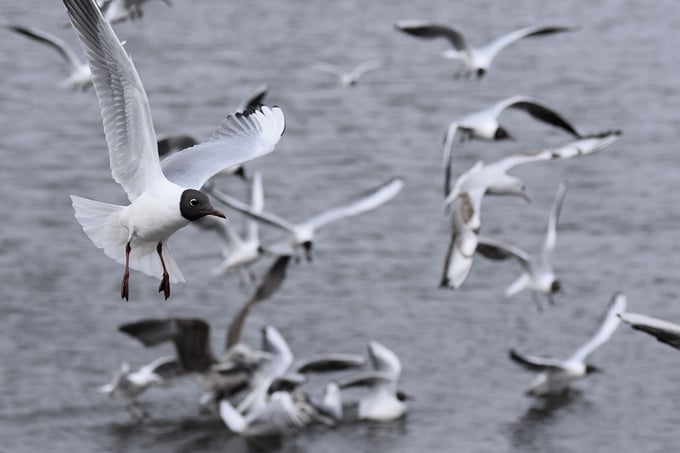May 26, 2025 | 05:24 GMT +7
May 26, 2025 | 05:24 GMT +7
Hotline: 0913.378.918
May 26, 2025 | 05:24 GMT +7
Hotline: 0913.378.918

In wild birds, black-headed gulls continued to be heavily affected by avian influenza. Photo: Matthew Cassidy
These are the main findings from the latest report on avian influenza by the European Food Safety Authority (EFSA), the European Centre for Disease Prevention and Control (ECDC), and the EU Reference Laboratories (EURL), which confirm that the avian influenza situation in Europe is improving and confirms that the risk to the general public remains low.
Between 2 March and 28 April 2023, highly pathogenic avian influenza outbreaks were reported in domestic (106) and wild (610) birds across 24 countries in Europe. Poultry outbreaks occurred less frequently compared to the previous reporting period and compared to spring 2022, notes the report.
Most of these outbreaks were classified as primary outbreaks without secondary spread, and some of them were associated with atypical disease presentation, in particular low mortality.
Gulls and other species more severely affected
In wild birds, black-headed gulls continued to be heavily affected, while other threatened wild bird species, such as the peregrine falcon, also showed increased mortality. The ongoing epidemic in black-headed gulls, many of which breed inland, may increase the risk for poultry, especially in July-August, when first-year birds disperse from the breeding colonies.
Spread to other species
The virus also continued to spread in the Americas, including in mammalian species, and is expected to reach the Antarctic in the near future, notes the report. In the US, 2 cases were reported in cats and 1 case in a dog in Canada.
Avian influenza infections were detected in 6 mammal species, particularly in marine mammals and mustelids, for the first time, while the viruses currently circulating in Europe retain a preferential binding for avian-like receptors.
Human infection
Since 13 March 2022 and as of 10 May 2023, 2 human cases of H5N1 bird flu were reported – 1 from China and the other from Chile – and 3 H9N2 and one H3N8 human infections in China. The risk of infection with the virus strain currently circulating in Europe remains low for the general population in the EU/EEA, said the report, while the risk remains low to moderate for workers and other people in contact with potentially infected diseased and dead birds and mammals.
(PW)

(VAN) Alt Carbon has raised $12 million in a seed round as it plans to scale its carbon dioxide removal work in the South Asian nation.

(VAN) Attempts to bring down the price of the Japanese staple have had little effect amid a cost-of-living crisis.

(VAN) Fourth most important food crop in peril as Latin America and Caribbean suffer from slow-onset climate disaster.

(VAN) Shifting market dynamics and the noise around new legislation has propelled Trouw Nutrition’s research around early life nutrition in poultry. Today, it continues to be a key area of research.

(VAN) India is concerned about its food security and the livelihoods of its farmers if more US food imports are allowed.

(VAN) FAO's Director-General emphasises the need to work together to transform agrifood systems.

(VAN) Europe is facing its worst outbreak of foot-and-mouth since the start of the century.